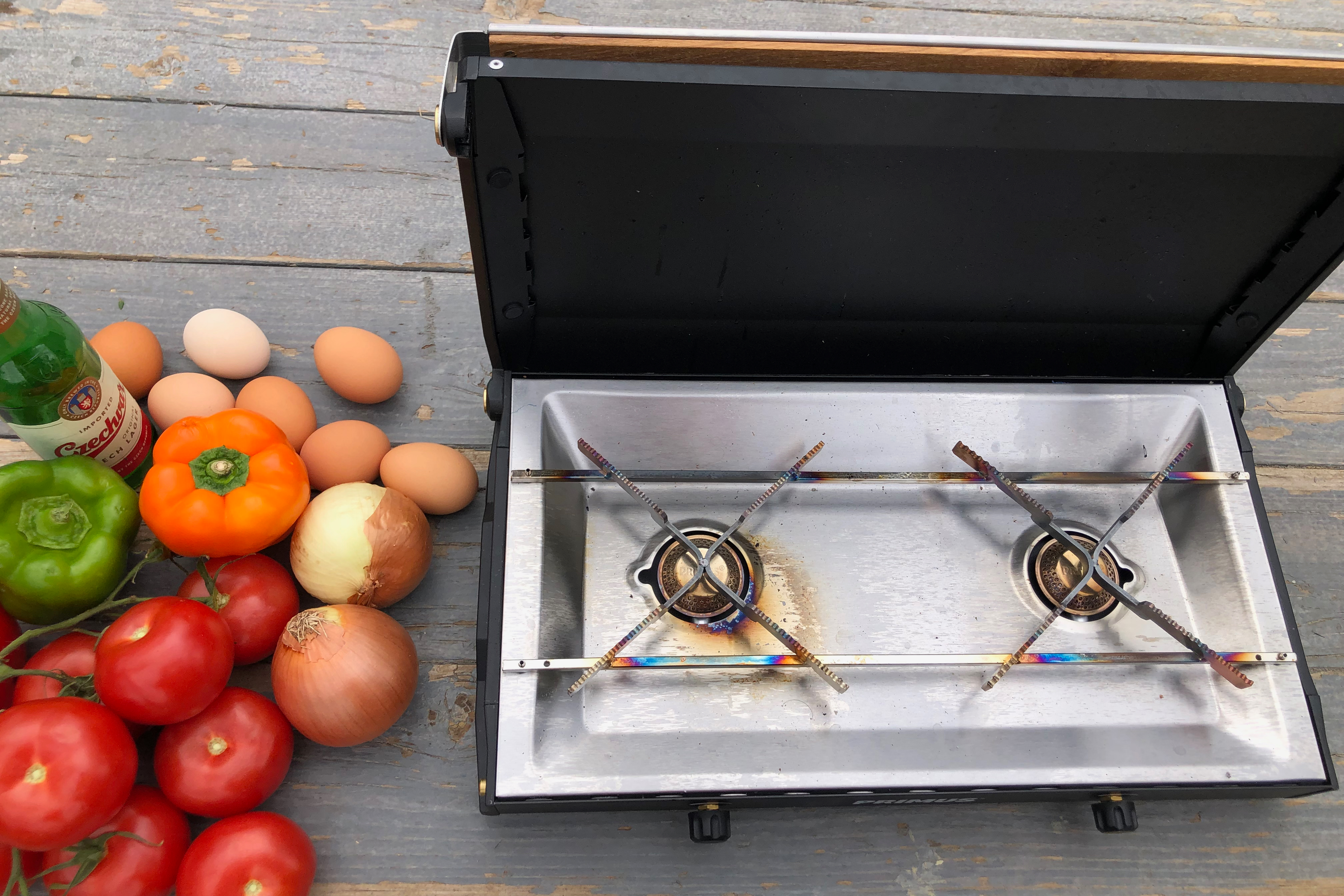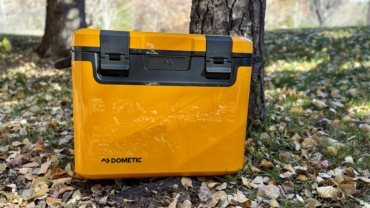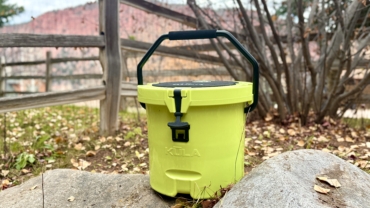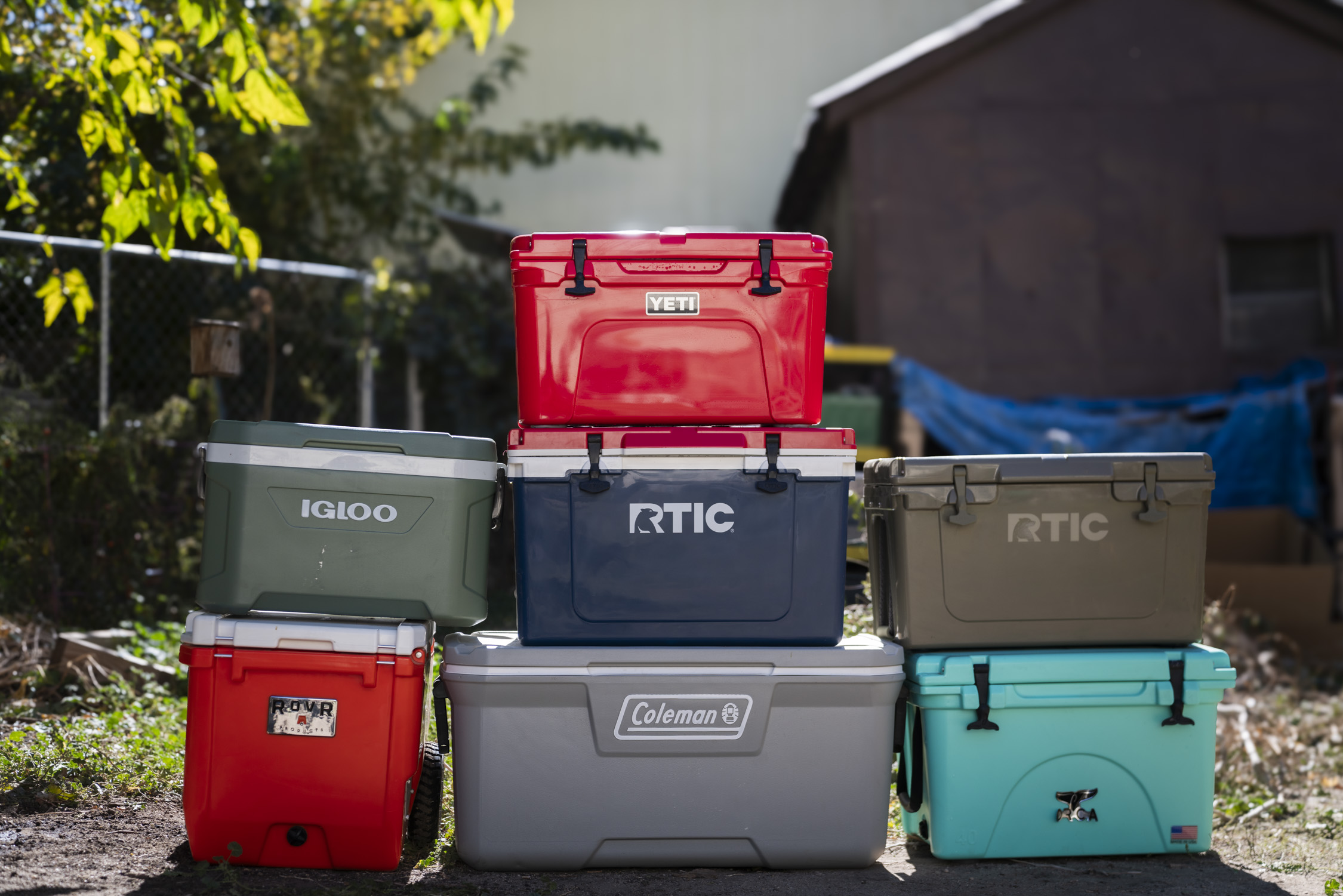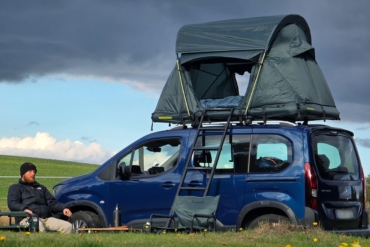The five of us stumbled back into camp after 8 hours in horribly arctic conditions. The mountain spoke; it said “no” to our planned spring ski objective. The wind and snow howled and whipped over 40 mph. I almost lost my shell jacket to a gust on a ridgeline. My face was bright red from wind burn, my water had frozen, and all of us were depleted to the brink of collapse.
Nearing the end of our ski week, our collective food stores were scant. One and a half limp tofurkey sausages over there, a handful of questionable broccoli over here, some dried pasta spilled on the floor of my camping bin, and some pesto paste well past its prime. But I had to make it work. The boys were collapsing into camp chairs all around me, and the last of our Modelos were deployed.
This was a job for the Primus Kinjia, the tiny two-burner stove that only got the nod because there was a tiny slot left for gear in my jam-packed Forester. With 1% battery left in my energy reserves, I pulled it out, fired it up, and within minutes had a dumpster pesto pasta hot and ready to feed the whole team.
In short: The Primus Kinjia two-burner stove is far smaller than the competition. But small doesn’t mean weak — this stove has a wide temperature range capable of cooking whatever you can throw at it, from burgers to risotto to a scrambled egg breakfast to feed your whole crew. It’s more vulnerable to wind gusts than the other two burners, but camp chefs will be thrilled with the quality, functionality, and portability of the Kinjia.
To see more of the best camping stoves on the market today, check out GearJunkie’s guide to the Best Camping Stoves.
- Weight: 8.2 lbs.
- Dimensions: 18.7" x 11.6" x 3.1"
- Output: 10,200 BTUs; 3,000W (x2)
- Feeds: 1-10 (the brand claims)
Pros
- More lightweight and compact than other similar two-burner stoves
- Can simmer on low heat, and sear on high
- Cleanup is a breeze
Cons
- No windshields on sides
- No "ignitor" button
Primus Kinjia Stove Review
The Primus Kinjia is a mightily capable stove in a small package. And it does a lot more than heat up scraps and instant meals.
Skip to the next weekend. My wife, Rachel, and I found ourselves car camping in the high desert, putting the Kinjia to the test on the opposite end of the culinary spectrum. She’d been eyeing Ottolenghi’s shakshuka recipe and was confident that we could campify it.
I popped open the Kinjia, pulled the regulator out of the holster, connected it to propane, twisted the dial, sparked it up, cracked open a cold one, and dropped the skillet on top. We were cooking.

Getting Gourmet With the Primus Kinjia Stove
Phase one was a creamy polenta. It required low and slow simmering for 20 minutes. The Kinjia is impressive in this way. You can really drop the heat low to open up more delicate recipes.
Full blast on the other side just as the wind started gusting — I needed the cast iron skillet red hot to sear the cut faces of two ripe tomatoes for a charred tomato hors d’oeuvre à la Francis Mallman. Most two-burners have this functionality covered.
So, it was a low bar — and the Primus Kinjia Stove cleared it with the product’s claimed 10,200 BTUs. I dropped the two halves of tomato onto the skillet’s bubbling oil, and the satisfying hiss told me the Kinjia was absolutely firing.
With cheese boards and another round of drinks holding the campers at bay, Rachel fired one side to medium to slow sauté the heart of the dish. It was a colorful mix of bell peppers, onions, and fresh tomato with thyme and dry-roasted cumin seed in our biggest 10.25-inch cast iron skillet.
The last phase was dropping an egg into each quadrant to slowly set under a lid — back to low heat. Even with small-diameter burners relative to other stoves, the cast iron distributed the heat more or less evenly so that the eggs cooked at the same rate. Dinner was served, compliments to the Kinjia.
Breakfast With the Primus Kinjia Stove
The next morning, my 9.5” x 16.75” cast iron griddle occupied both burners as if it was made for the Kinjia. It’s an elegant method for expanding the cooking surface. It handled breakfast sandwich duties with precision.
I had to keep the coffee flowing on a separate backpacking stove to forestall a morning mutiny, however.
Compact Size
There’s one thing that really sets this stove apart from the rest: It’s tiny. This is the smallest two-burner camp stove that I’ve found. And that’s an important characteristic for a lot of users. I’m out car camping a lot and between me, my wife, our bikes, skis, gear, and whatever else; the Subaru Forester gets stuffed to the max more quickly than I care to admit.
There are a few nooks and crannies that are always open, however, and the Kinjia slots in perfectly.
I ran a quick and dirty analysis of the dimensions of some of the best camp stoves on the market. Only the GSI Pinnacle Pro is shorter at 1.4 inches. But, coming in at just 3.07” x 18.7” x 11.6″, the Kinjia is smaller in every other dimension compared to the Coleman 1900, Eureka Ignite, Camp Chef Teton, and the Pinnacle.
It’s also at least 1,000 g lighter than all of them. This is the first two-burner that I’ve been able to store and carry inside my camping bin. The light weight makes a big difference when I’m moving the bin around to find the best campsite or kitchen with the best view.

Cleanup
After absolutely demolishing every last bite of shakshuka-topped polenta, we had to reckon with the cleanup — the one part of camp cooking that I detest the most. It’s agony. I’ll take any shortcuts available to speed it up and get back to my camp chair.
Thankfully, the Kinjia cleans up quickly. The drip plate pops out for a quick scrub, and the whole thing is easy to wipe down. There really aren’t too many nooks and crannies for food to hide in, either.
Fuel Options
The Kinjia is compatible with both the standard Coleman Propane 16-ounce camping cylinders and backpacking fuel canisters via the included fittings. That meant I could finally use up all those half-empty canisters jangling around in my camping bin. I also fueled it with my refillable propane growler, which I much prefer for car camping.
The stove comes with a metal propane stand to hold the green canister at the right angle. It’s a nice feature. But, I found it easy to misplace, as it doesn’t attach to the stove in any way. I couldn’t tell if it made a major impact on burn quality or not.
Tradeoffs
The designers at Primus had to sacrifice a few popular features to attain the compact and lightweight package that is the Kinjia Stove. The most obvious is the windshields that typically attach between the lid and stovetop of two-burner stoves. They weren’t forgotten.
But with such a narrow profile, large camp cookware wouldn’t fit side by side if they were confined by shields. The overhang on either side is what makes the miniature dimensions possible.
My 6.5-inch inch cast iron, 7.8-inch pot, and 6-inch nonstick pan all played nicely together. It was only when I dropped the 10.25-inch cast iron skillet into the rotation that things got somewhat tight. That could limit the group size that you can realistically cook for with the Kinjia.
The flame went out a few times in strong wind gusts, though much less often than I expected. I got good at positioning the stove and items around it to block the more predictable gusts. Building a windscreen is a simple DIY if you really need one.
The Kinjia also forgoes an ignitor, which will annoy some camp chefs. I got over it pretty quickly. Having a lighter on hand was second nature since the ignitor on my last stove barely worked anyway.
Conclusion

There are a lot of great two-burner stoves out there, and GearJunkie has tested them. The Primus Kinjia stands out from the crowd primarily for its compact size and aesthetic design.
It’s not just good looks, though. The Kinjia delivers plenty of heat, and it can simmer on low with the best of them — and cleanup is an absolute breeze. It forgoes wind protection and an ignition switch, but overall this stove is excellent for camp chefs cooking diverse meals for small to medium-size groups in any outdoor setting you choose.
